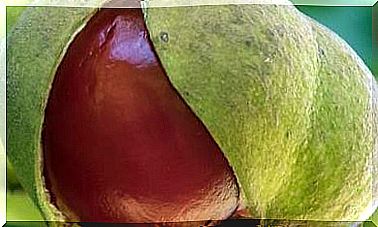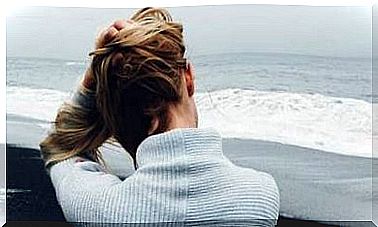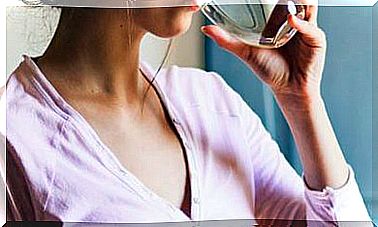“If You Want To Know The Color In Fashion, Look At The Rivers In China”
The sustainable fashion expert Bea Valdivia explains to us what are the challenges that must be overcome so that our wardrobe is not a problem for the planet.

Bea Valdivia is a consultant specialized in the ecological sector and creator of Eco Fashion Latam, Ecoluxehub and Moda en Positivo, platforms to promote the financing and commercialization of new sustainable and responsible fashion brands.
It also collaborates with Biocultura, the great Spanish fair for organic products that organizes the workshops and the Planeta Moda space in each edition. We have chatted with her about the current challenges of fashion in relation to sustainability, health and social responsibility.
Interview with Bea Valdivia, expert in sustainable fashion
– What work are you developing now with Biocultura in the field of sustainable fashion?
–BioCultura since its creation almost 30 years ago has always had a space dedicated to the textile and footwear sector. In the 90s we did the first sustainable fashion show with the few brands that existed at that time. Four years ago, when we saw that sustainable fashion was already an unstoppable growing sector, we decided to give it more prominence. Thus, Planeta Moda was born.
“We want to go to the beginning, that is, to the recovery of ecological crops of natural fibers that are being lost in our country and, after that, promote clean production.”
–What do we find in Planeta Moda?
–It is a space dedicated to exhibitors of clothing, footwear, accessories, bags, jewelry and accessories made with ecological or recycled raw materials. But we also want to go to the beginning, that is, to the recovery of organic crops of natural fibers that are being lost in our country and, after that, promote clean production.
We organize an extensive program of talks and workshops dedicated both to professionals in the sector and to students or consumers, in which we address techniques but also innovation, communication or marketing, styling or any initiative related to sustainable fashion.
– What does your Ecofibra initiative consist of?
–It is a project that we started this year and which is being developed within the Emploaverde Program of the Biodiversity Foundation of the Ministry of Agriculture and Fisheries, Food and the Environment, co-financed by the European Social Fund. And it is aimed at freelancers, entrepreneurs or employees who work or want to work in the sustainable textile sector, whether from the production of natural fibers, the manufacture of textiles, design or marketing. The objective is to promote the fashion sector made with sustainable and local textile fibers.
“The objective is to promote the sector of fashion made with sustainable and local textile fibers.”
– Where do interested persons have to go?
–We have a website, www.ecofibra.es, where all the necessary information is offered to access these courses, which are both online and in person. The project is developed in two Autonomous Communities: Andalusia, because the cotton grown in Spain is concentrated there, and Catalonia because of its relationship with the textile industry.
–What are the main challenges facing sustainable production?
–The good news is that more and more new and existing brands are directing their philosophy towards sustainability, but there is a great need for accessible raw materials, especially for small designers and workshops.
Finding the fiber, the fabrics, in the immediate environment would lower production costs. We are finding it difficult to locally produce natural fiber crops such as organic cotton or hemp.
There is also a need for greater consumption of sustainable fashion in our country, which is still well below the European average. This means that some brands cannot survive two years after their creation or that, if they do, they must combine it with other sources of income. The biggest challenge is working as a team to achieve greater sustainability.
– Is it very expensive for all our clothing to be sustainable and responsible?
–It is not expensive, because the concept of consumption changes, that is, we consume in a better way: looking for higher quality and durable parts, paid at a fair price. The so-called “fast fashion” has done a lot of damage to the fashion sector because the knowledge of the value of well-made and quality things has been lost.
Many believe that the cost of a shirt is € 3, and I always say that if I pay that price, someone is losing along the way. It just takes a little math: if we count the farmer, the weaver, the designer, the one who makes it, the one who transports it and the one who markets it, as a salsa song says: “there is no bed for so many people” .
“Many believe that the cost of a shirt is € 3, and I always say that if I pay that price, someone is losing along the way.”
– Cheap is expensive.
– What costs dearly are the working conditions of thousands of workers in the textile sector, the loss of companies and jobs that relocation has led to. We still lack awareness and training on sustainable fashion. Today those who sell must at the same time train, to convey what is the true value behind each piece and that the consumer does not focus only on the price.
– Are we not aware of how such cheap clothes are produced … or do we not want to be?
–Since the Rana Plaza disaster, fortunately we have not stopped being aware of the deplorable conditions of many workers through countless documentaries, and not only in Asia. Then there are the amount of environmental damage.
You know what they say, that if you want to know what is the fashionable color of the next season, you only have to see the color of the rivers in China. But the consequences are close to us. We realize when we see that stores in our neighborhood or companies in our town are closing, or it is members of our family who are left without work. When it touches us closely it hurts!
“You know what they say, that if you want to know what the fashionable color is for next season, you just have to see the color of the rivers in China. But the consequences are close at hand.”
–And there are the health effects of these garments full of chemicals…
–It is another reason why many consumers make the change, the large amount of toxins that are used in the textile industry and that have made the sufferers of Multiple Chemical Sensitivity, for example. A recent study says that the sectors that care most about sustainable fashion are future parents (we all want the best for our children) and millennials.
– What are the most interesting initiatives in Spain in relation to the sustainable fashion sector?
–I find it interesting that several sustainable fashion associations have been created in different communities, because it has allowed many professionals to join forces and share synergies. Cooperatives and production workshops with social inclusion projects are also growing.
On the other hand, bloggers , apps , personal shoppers and stylists with a philosophy of responsible consumption have proliferated in the communication sector .
In the social sphere, many campaigns have been developed in defense of better working conditions for workers in the textile sector, led by NGOs. Lastly, the training offer is also growing.
–And at an international level, what has caught your attention?
–The Fashion Revolution Day project, which recalls the tragedy of Rana Plaza, has been very popular. On April 24, different actions will be carried out in many countries of the world to reflect and ask ourselves who makes our clothes.
And Livia Firth’s personal project Eco Age has also had a lot of resonance, because it has brought sustainable fashion to the top of the catwalks. A few days ago he had a unique event where none other than Queen Elizabeth of England has had a presence at Buckingham Palace.
On another scale, many small projects are also betting on ethical fashion, such as the Foro de Moda Ética and Eco Fashion Latam platforms, which give visibility to Latin countries, which are rising like foam in sustainable initiatives.
“Many small projects are also betting on ethical fashion, such as the Foro de Moda Ética and Eco Fashion Latam platforms.”
–What important news are there in the world of new fibers?
‘There is a fantastic range of possibilities here. We start from the recovery of natural fibers such as hemp and others such as bamboo, the lotus flower or the different varieties of fibers from trees such as Lyocell or Tencel appear.
Then there are technologies that create new fibers from the recycling of others, and fibers are also created from waste, such as coffee or orange peelings. New materials are being created to “replace” the leathers with the so-called “vegetable leathers”, from pineapple, milk or mushrooms.
– Are all these materials ecological?
– There are many discussions, because sometimes the production processes of some of these fibers are not sustainable enough, but much progress is being made. There are entities and companies that are betting on the investigation of new materials. The most spectacular one that has not yet gone on sale: a fiber made from the spider’s web.
– Does the future go through reducing consumption in general?
-More than to reduce, to develop a more responsible consumption. It does not mean that we consume less, but better.
–How much sustainable awareness is there among conventional producers?
–Measuring it would be difficult, but I can tell you that it is increasing because we cannot be oblivious to the consequences of climate change or the amount of waste we generate. In addition, consumer pressure is also growing. Brands are feeling that this is a market need.
“We cannot be oblivious to the consequences of climate change or the amount of waste we generate.”
–Can you give us some practical advice to make our relationship with clothing more sustainable?
–First, do a good analysis of your wardrobe: see what works, what no longer, what can be recycled or customized and what is really worth giving away, exchanging or selling because you are no longer going to use it. Do not fool yourself!
Create your wardrobe with basic pieces that can be combined, with the colors and shapes that best suit your physique, regardless of whether or not they are the fashionable colors. Going to fashion is creating your own style!
And when you really need a piece to complete your looks , go looking for it, but buy with conscience: see what materials it is made with, that they are respectful with the environment and that the brands are of quality and socially responsible.









